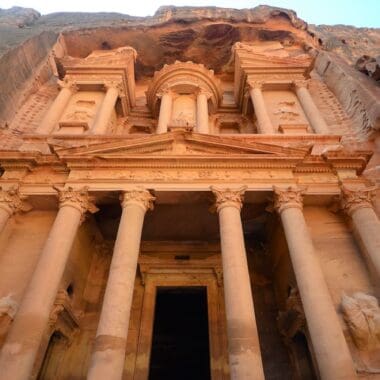Are you a teacher looking for a unique and educational experience to share with your students? Look no further than the fascinating La Brea Tar Pits in Los Angeles! This iconic attraction not only offers a journey through time, but it also extends a special discount for teachers. As an educator, you can take advantage of this wonderful opportunity to explore the rich history and natural wonders found at the La Brea Tar Pits.
Full disclosure: If you visit a link on this page and make a purchase, we may receive a small commission at no extra cost to you.
The La Brea Tar Pits, located in the heart of Los Angeles, is a must-visit destination for history and science enthusiasts alike. This extraordinary site is home to preserved fossils that are over 10,000 years old, including the remains of mammoths, saber-toothed cats, and dire wolves. Visitors can take part in guided tours, witness scientific excavations, and even watch paleontologists as they carefully extract ancient artifacts. This interactive experience allows visitors to delve into the mysteries of the past and gain a deeper understanding of the prehistoric world.
If you are a teacher, you can benefit from the special discount offered by the La Brea Tar Pits. To avail of this opportunity, simply present a valid teacher ID or proof of employment at the ticket counter. This discount not only allows educators to explore the tar pits and the accompanying museum at a reduced price, but it also opens the door for teachers to provide their students with an extraordinary and immersive learning experience. By taking advantage of the La Brea Tar Pits teacher discount, you can transport your students back in time and ignite their curiosity about the natural history of our planet.
Q&A
Q: What are the La Brea Tar Pits?
A: The La Brea Tar Pits are a unique geological feature located in the heart of Los Angeles, California. They are natural asphalt seeps that have trapped and preserved hundreds of thousands of prehistoric plants and animals for millennia.
Q: How did the La Brea Tar Pits form?
A: The Tar Pits were created around 40,000 years ago when crude oil combined with gas and water to form thick asphalt. Over time, this sticky substance oozed to the surface due to faults in the Earth’s crust and created the iconic Tar Pits we see today.
Q: Are the Tar Pits still active today?
A: Yes, these Tar Pits are still active to some degree. Although they don’t exhibit the same constant bubbling and seeping as they did in the past, occasional releases of asphalt can still be seen. However, the activity level is significantly lower than it was thousands of years ago.
Q: What makes the La Brea Tar Pits significant?
A: The Tar Pits are scientifically significant due to the remarkable fossil collection they hold. This unique preservation has allowed researchers to delve into the rich biodiversity of Ice Age Los Angeles, providing valuable insights into the plants, animals, and even climate of the region during that time.
Q: What kind of fossils have been discovered at the La Brea Tar Pits?
A: The Tar Pits have yielded an impressive array of fossils, including the remains of dire wolves, saber-toothed cats, giant ground sloths, mammoths, and even humans. In fact, the Tar Pits hold the largest collection of Ice Age fossils on Earth.
Q: How do fossils end up in the Tar Pits?
A: Small animals and insects, attracted by water or the scent of trapped prey, inadvertently step into the asphalt, which then pulls them further in due to its stickiness. Larger animals, such as mammoths or predators pursuing their trapped prey, would become disoriented and find themselves sinking into the pits.
Q: Can visitors see fossils at the La Brea Tar Pits?
A: Absolutely! The Tar Pits include the Page Museum, which houses an incredible collection of fossils excavated from the asphalt. Visitors can marvel at these authentic fossils, observe ongoing excavations, and explore interactive exhibits to learn more about the fascinating historical remains and the scientific process of discovering them.
Q: Can visitors actually touch the fossils?
A: While visitors cannot directly touch the fossils on display, there is a “Touch Table” where they can handle and examine replica fossils to get a tactile experience. The museum strives to balance the preservation of precious fossils with sharing an interactive and educational environment for visitors.
Q: Is there anything else to do in the vicinity of the La Brea Tar Pits?
A: Yes, absolutely! The Tar Pits are situated in the heart of Los Angeles, surrounded by cultural landmarks and attractions. Just steps away, visitors can explore the iconic Los Angeles County Museum of Art (LACMA), stroll through the beautiful grounds of Hancock Park, or even catch a show at the nearby Ebell Theater.
Q: Can visitors participate in the excavation process at the Tar Pits?
A: While public participation in the actual excavation is not possible, visitors can witness the excavation process in action during their visit. The museum hosts ongoing excavation projects in designated areas, allowing visitors to observe paleontologists carefully extracting fossils from the Tar Pits, providing an amazing educational opportunity.
As we bid farewell to the tumultuous landscapes of La Brea Tar Pits, we are left captivated by its enthralling story that echoes through the ages. Nestled within the heart of Los Angeles, this sublime natural wonder has indelibly etched its name in the annals of time.
With its inky, hallowed depths, the tar pits embrace a narrative that stretches back thousands of years. These sticky pools of asphalt, concealing a secret paradise, have served as silent witnesses to a bygone era. Here, time wrinkles and warps, unveiling a prehistoric pageant that still bewitches the modern age.
Imposing and foreboding, the tar pits reflect the capricious nature of our ever-changing world. These treacherous mirages may appear as deceptively calm waters, drawing unsuspecting souls towards their glistening abyss. Yet, it is precisely this treachery that has beguiled scientists, archeologists, and curious wanderers for centuries.
The allure lies not only in the visceral beauty, but also in the invaluable insights they have generously imparted. Through their murky embrace, an awe-inspiring tapestry of Ice Age artifacts has emerged, shedding light on the creatures and civilizations forever submerged in slumber beneath our feet. The bones of mammoths, saber-toothed cats, dire wolves, and other ancestral marvels, eloquently speak of a bygone era, frozen in time.
And what would this timeless vortex be without the steadfast guardians who tend to its every whim? The La Brea Tar Pits Museum, an oasis of knowledge and wonder, stands as a testament to our relentless pursuit of unraveling the mysteries of the past. It humbly hosts the countless fragments of forgotten lives, arming us with knowledge as we venture forward into an uncertain future.
So, as we venture away from this primordial portal, let us not forget the lessons withheld within its grasp. The La Brea Tar Pits serve as a tangible reminder of the fleeting beauty that thrives within the boundaries of imperfection. This ethereal haven reminds us that even the most formidable landscapes hold untold secrets, waiting patiently for curious souls to uncover.
Thus, as we step away, let us carry with us the echoes of the past, the whispers of a time long gone, and the profound connection that binds us all. We part ways, filled with reverence for the custodians of knowledge who guard this ethereal domain, ever grateful for the enigmatic gift bestowed upon us by the majestic La Brea Tar Pits.






